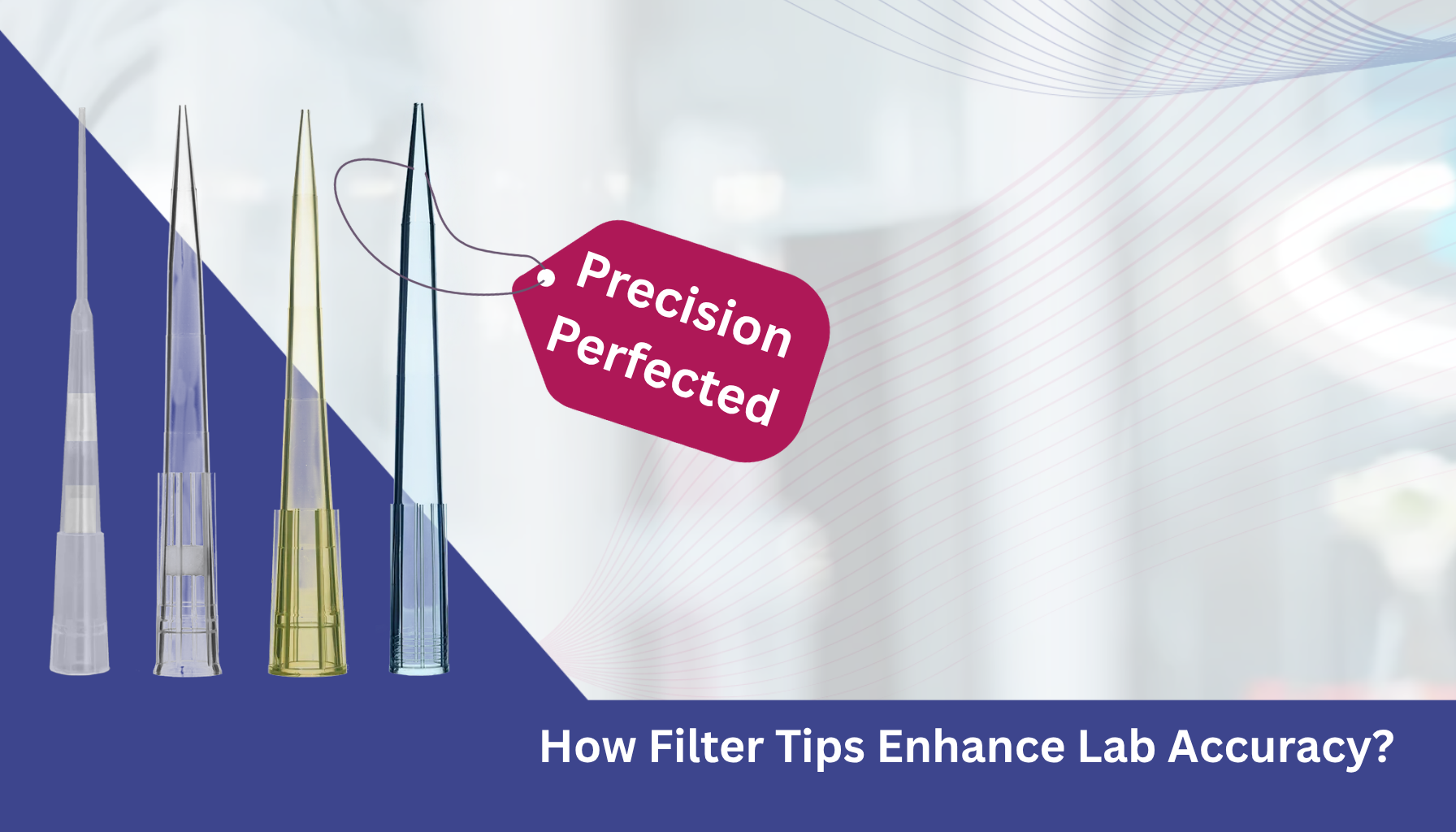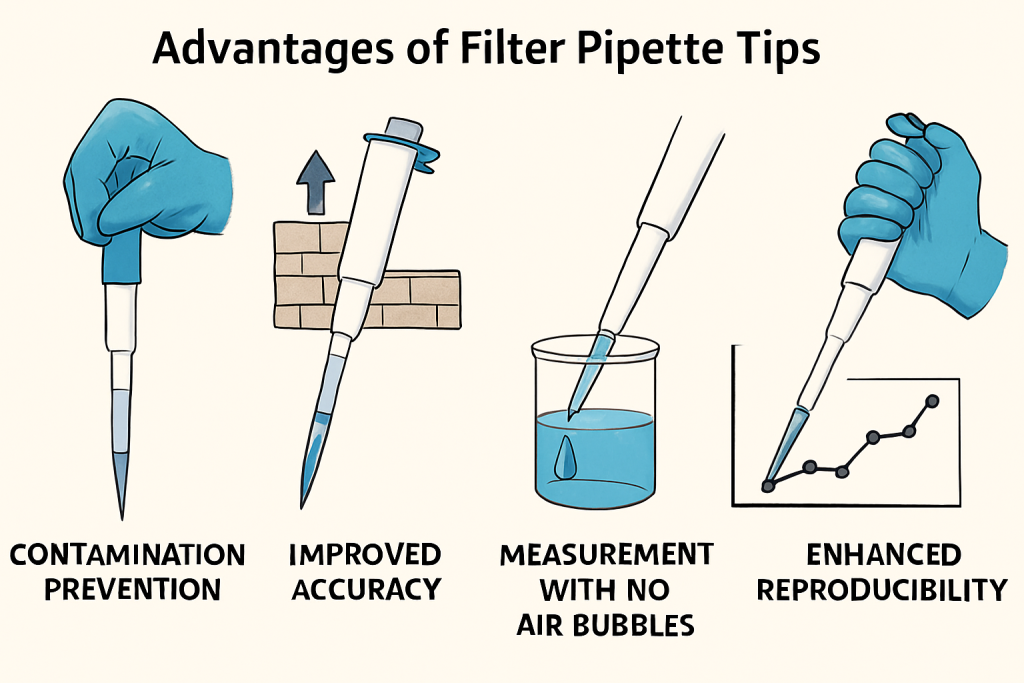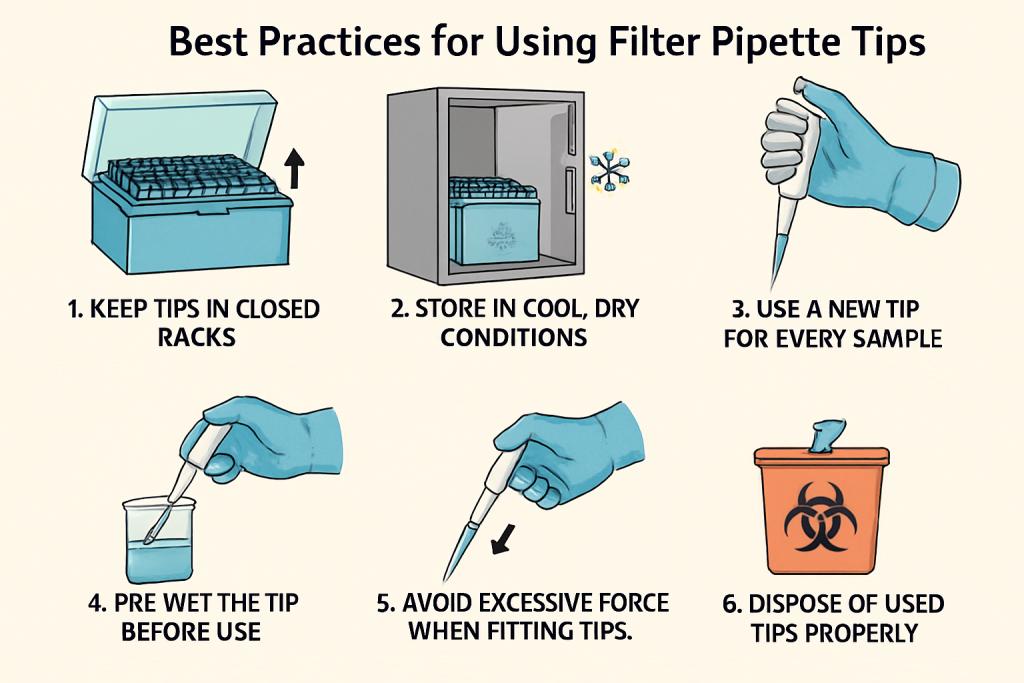In modern laboratories, precision is bubble-free. Whether you work with molecular biology, biochemistry, or pharmaceutical research, the exact pipeline is important to achieve constant and reliable results. Over time, various tools have evolved to enhance this process — chief among them are filter tips, which provide contamination-free and precise fluid handling. This article dives deeply into science and the importance of filter tips, with a spotlight on Mytip pipette tips from Ahn Biotechnologie GmbH, known for their extraordinary performance and reliability.
Understanding Pipette Tips and Their Role in Laboratory Settings
What Are Pipette Tips?
Pipette tips are disposable, cone-shaped attachments positioned on micropipettes to appropriately aspirate and dispense small volumes of liquid. They act as the interface between the sample and the pipette, making sure the sample is transferred without direct contact with the pipette itself.
Difference Between Standard and Filter Pipette Tips
- Standard tips: Simple plastic tips used for general pipetting.
- Filter tips: Filter tips feature a permeable barrier within the tip that stops aerosols and liquids from reaching the pipette shaft, providing enhanced protection against contamination.
Why Precision in Liquid Handling Matters
Common Challenges in Pipetting Accuracy
Even minor deviations in volume transfer can lead to:
- Inaccurate concentrations
- Failed reactions
- Reproducibility issues in scientific publications
Impact of Tiny Errors on Experimental Outcomes
In molecular assays or diagnostic tests, even a 1 µL variation can alter results significantly. In high-stakes environments like clinical trials or genetic sequencing, such inaccuracies are unacceptable.
Introduction to Filter Tips
How Filter Tips Work
Filter tips feature an embedded barrier made of polyethylene or other porous polymers. This barrier:
- Prevents liquid from reaching the pipette barrel
- Blocks aerosol contamination
- Guards against cross-contamination between samples
Filter Tip Construction and Materials
High-quality filter tips like those from AHN Biotechnologie GmbH are used:
- Medical-grade polypropylene
- Hydrophobic filters
- DNase, RNase, and pyrogen-free materials
Key Advantages of Using Filter Tips
Contamination Prevention
The barrier filter acts as a protective wall against sample backflow, essential in sensitive experiments like PCR, where contamination could lead to false positives.
Improved Accuracy in Sample Measurement
By preventing air bubbles and liquid ingress into the pipette, filter tips support:
- Consistent liquid uptake
- Reliable pipette performance over time
Protection of Pipette Shaft
Filter tips extend the life of expensive pipettes by minimizing exposure to corrosive or biohazardous samples.
Enhanced Reproducibility in Results
With uniformity in liquid handling, scientists achieve reproducible data across multiple runs and batches.
When to Use Filter Tips in the Lab
PCR and Molecular Biology Applications
PCR is extremely sensitive to contamination. Filter tips are mandatory in the PCR setup to avoid false readings and maintain purity.
Handling Hazardous or Volatile Liquids
Filter tips protect users and equipment from accidental backflow of harmful chemicals or solvents.
Sensitive Cell Culture or Enzyme Reactions
In enzymatic reactions or cell culture, even minute contamination can compromise outcomes, making filter tips essential.
Exploring AHN Biotechnologie’s MyTip Pipette Tips
Precision Engineering for Optimal Performance
AHN’s MyTip Pipette Tips are engineered for a tight fit, minimal retention, and high transparency. Each tip supports:
- Smooth dispensing
- Maximum liquid recovery
- Leak-proof performance
Sterility and Certification Standards
Every MyTip filter tip is:
- Pre-sterilized
- Free from DNase, RNase, and pyrogens
- ISO certified for lab safety and accuracy
Compatibility and Versatility
AHN MyTip tip fits a wide range of piettes and are available in a wide volume range (10 µL to one thousand µL), making them ideal for instructional, scientific, and industrial labs.
Sustainability and Reusability in Modern Pipette Tips
Eco-Friendly Materials
AHN emphasizes sustainability through the usage of recyclable plastics within the manufacturing of their pipette tips without compromising sterility or integrity.
Packaging and Disposal Considerations
With autoclavable racks and recyclable packaging, MyTip offers a greener solution to laboratories worldwide.
Comparing Filter Tips with Standard Pipette Tips
| Feature | Filter Tips | Standard Tips |
| Contamination Control | Excellent | Limited |
| Pipette Protection | Yes | No |
| Application Specificity | Suitable for sensitive work | General use only |
| Reproducibility | High | Variable |
Best Practices for Using Filter Pipette Tips
- Keep tips in closed racks
Prevent airborne contamination by storing tips securely when not in use. - Store in cool, dry conditions
Maintain tip sterility and performance by avoiding heat and humidity. - Use a new tip for every sample
Eliminate the risk of cross-contamination and ensure accurate results. - Pre-wet the tip before use
Aspirate and dispense the liquid once or twice to improve precision, especially with viscous liquids. - Avoid excessive force when fitting tips
Gently attach tips to prevent seal damage and maintain accuracy. - Dispose of used tips properly
Use designated biohazard/sharps containers to ensure safe and eco-friendly disposal.
Final Thoughts: Control, Safety, and Efficacy with Filter Tips
In scientific research today, every microliter matters. The modern laboratory utilizes filter tips for pipettes, as they offer unmatched protection, precision, and reliability, eliminating cross-contamination, evaporation loss, and liquid retention. Experiment outcomes from AHN Biotechnologie GmbH MyTip Pipette Tips are verified to be reproducible, valid, and reliable, which makes the trusted filter tip an indispensable tool for researchers. For labs that value quality and safety, AHN MyTip Pipette Tips are the perfect fit—literally and figuratively.






